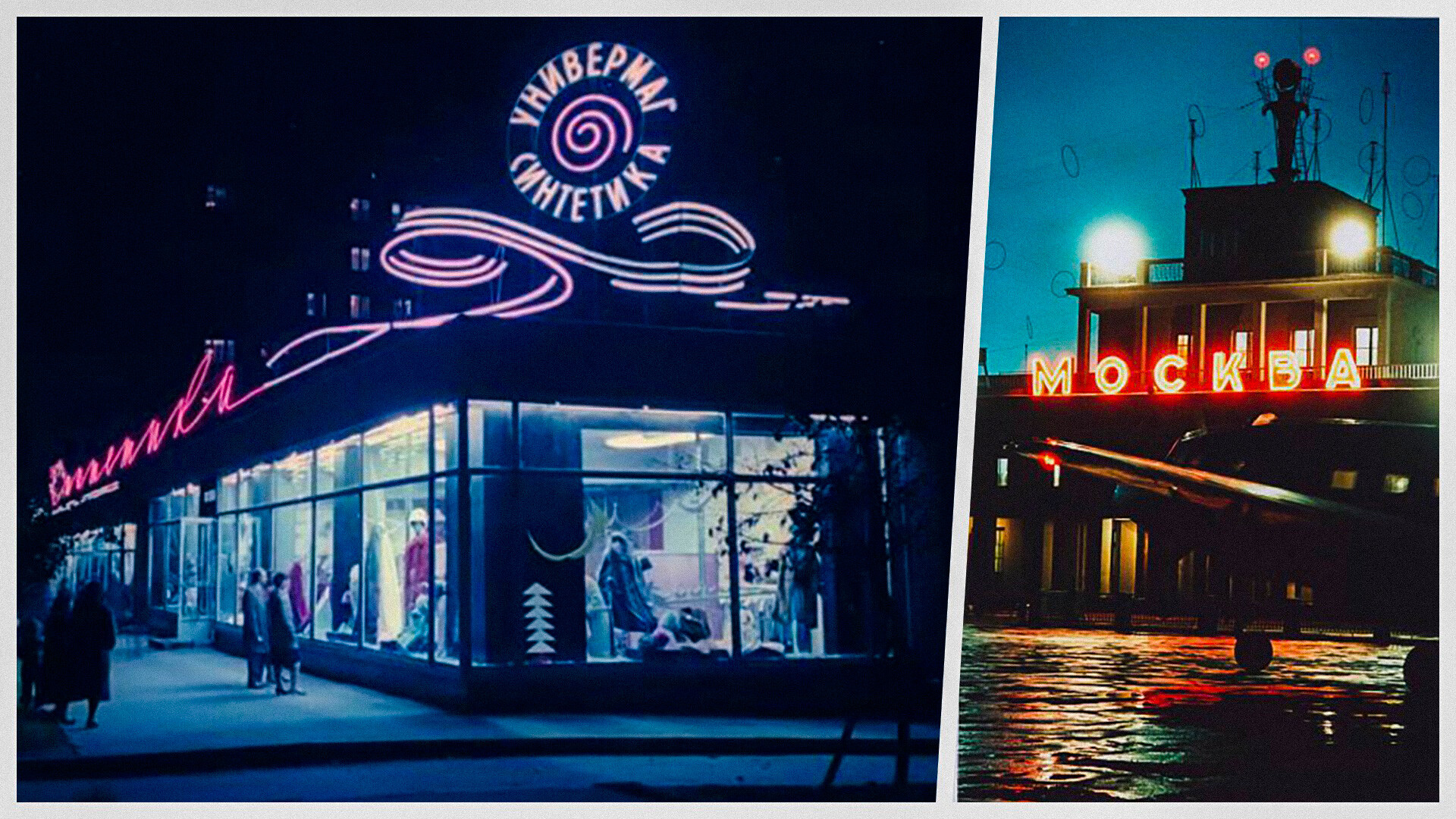
The first neon sign in the world appeared in 1911 – the new technology was invented and patented by Frenchman Georges Claude. The neon light in gas discharge tubes shone bright and pretty; its light was mostly used in advertising.
In the USSR, the first of such signs appeared in the 1930s. In the Soviet manner, ‘neon’ was called ‘gaslight’. A whole factory of light and art works was built in Moscow.
First of all, bright neon was used for propaganda. Phrases like “Workers of the world, unite”, in honor of the 20th anniversary of the Bolshevik Revolution, lit up with gas on Moscow’s Bolshoi Theater in 1937.
“Glory to the Soviet nation”, they proclaimed in 1958 for another Revolution anniversary.
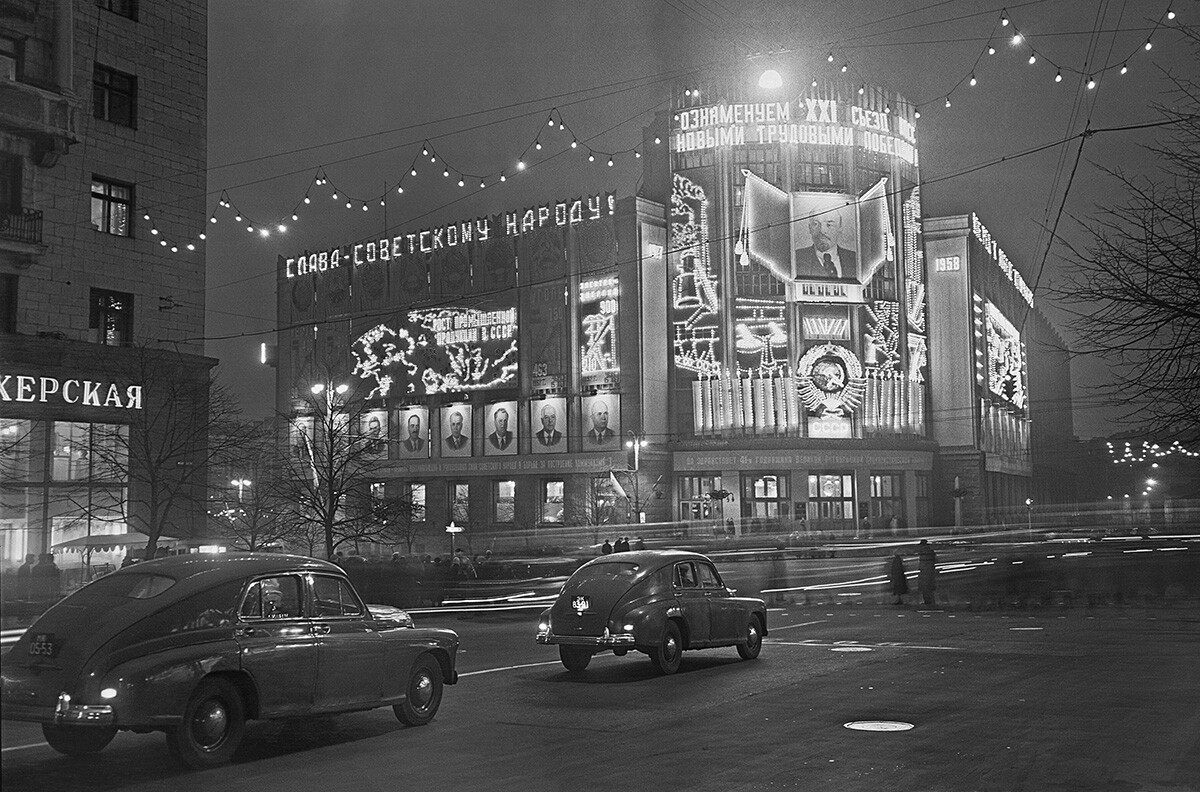
But neon lamps were also used for street signs. The names of important enterprises, as well as restaurants, stores and a lot more. In the photo below – the ‘Druzhba’ cafe with its illuminated sign on Petrovka Street in Moscow, 1957.
The true neon sign boom, however, began in the 1960s. Below, a worker is testing neon tubes used for the city’s illuminated advertising.
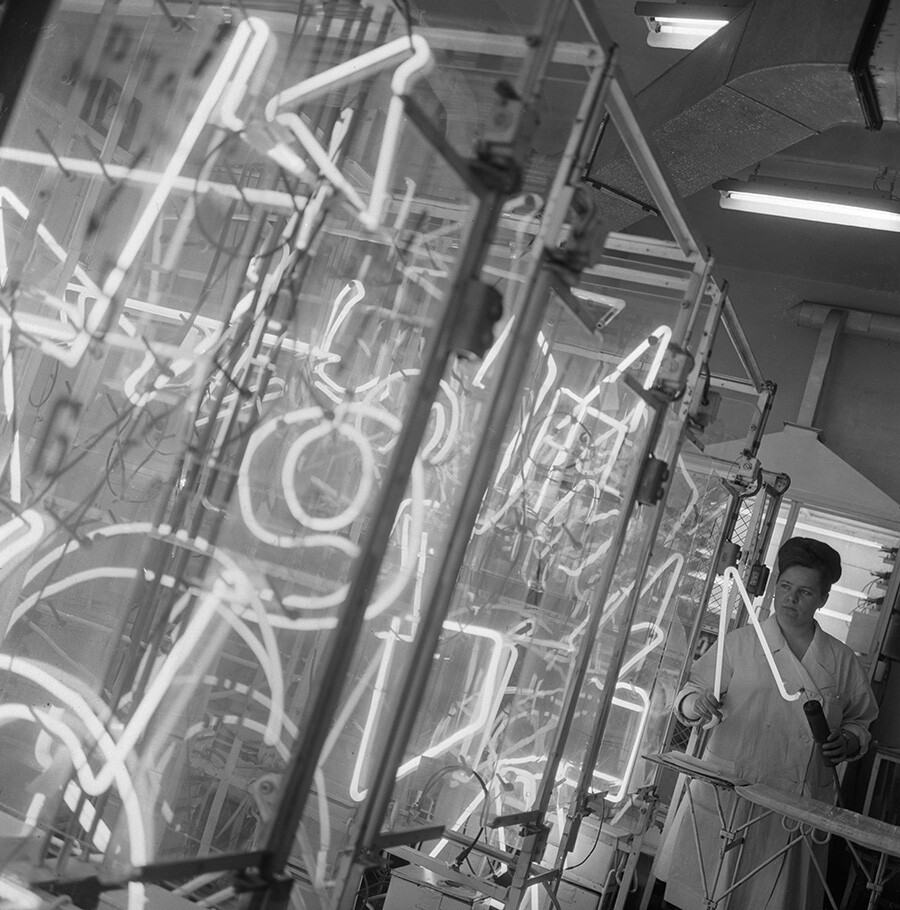
Gradually, neon advertising began to appear. For example, the advertisement of the ‘Tu’ planes with the motto “Fast, Comfortable, Beneficial” illuminated over Moscow’s Hotel Metropol in the 1960s.
In the years after the war, the thaw, new fashion and neon signs became a whole cultural and aesthetic layer of the 1960s.
Even a little ‘Soyuzpechat’ newspaper kiosk was brightly lit in 1961…
…as were theater box offices.
Not to mention large department stores like ‘Sintetika’ on Komsomolsky Prospekt in Moscow, pictured below in the 1960s.
‘Mossovet Cinema’ in Moscow was also beautifully lit in the mid-1980s.
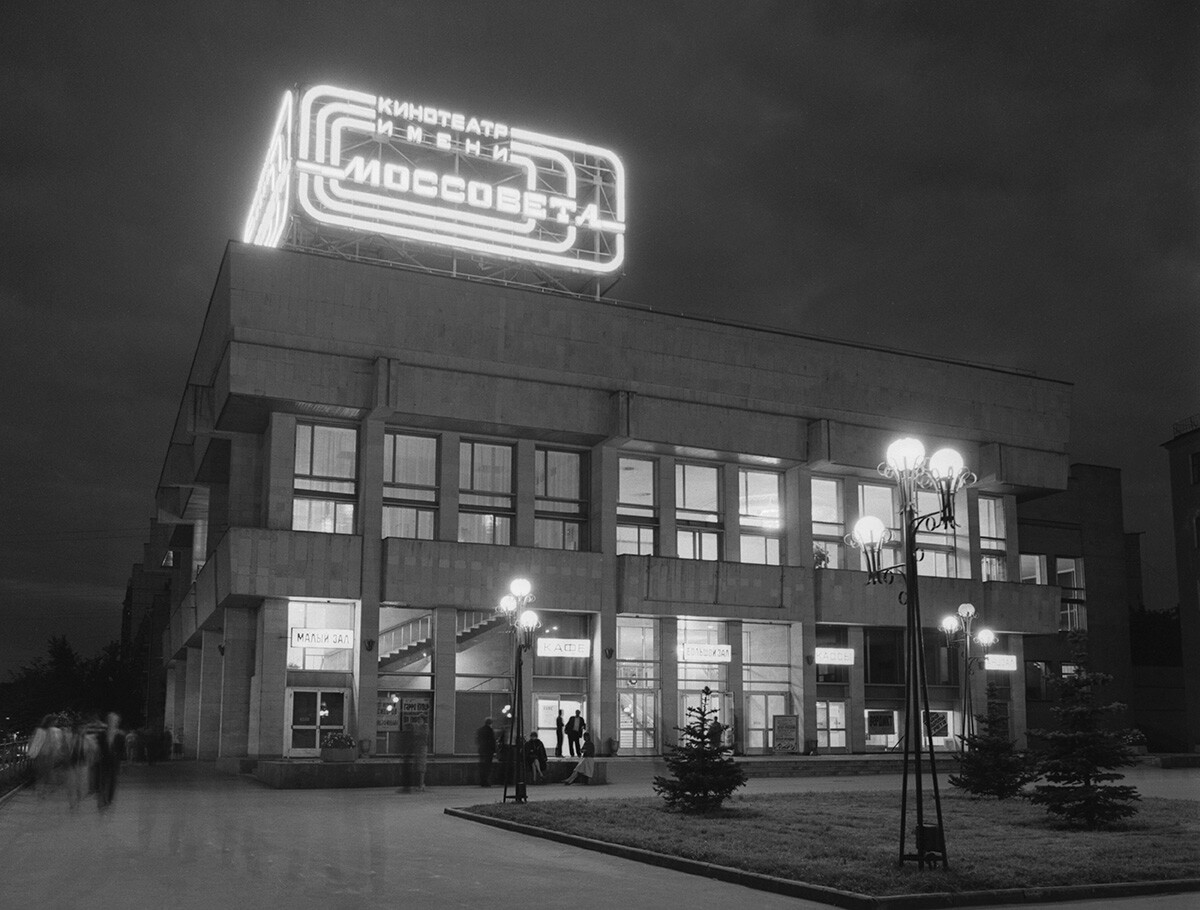
Neon letters spelling ‘MOSCOW’ also crowned the Vnukovo city airport in the 1960s.
The word ‘PRAVDA’ shone brightly on the roof of the ‘Pravda’ newspaper’s publishing house and printing house in 1977.
The northern capital was also all lit up – there were many signs on Nevsky Prospekt in Leningrad (now St. Petersburg), such as the photo below, taken in 1966.
Even during dark and bleak evenings, it was often bright as day. In the 1960s, one could kill some time in a waiting line, admiring, for example, the sign of the ‘Neva’ café and restaurant.
Meanwhile, other Soviet cities soon followed suit. Also, there are still old Soviet signs that have survived to this day! Like, for example, the House of Commerce on Lenin Prospekt in Murmansk, which was put up in 1985.
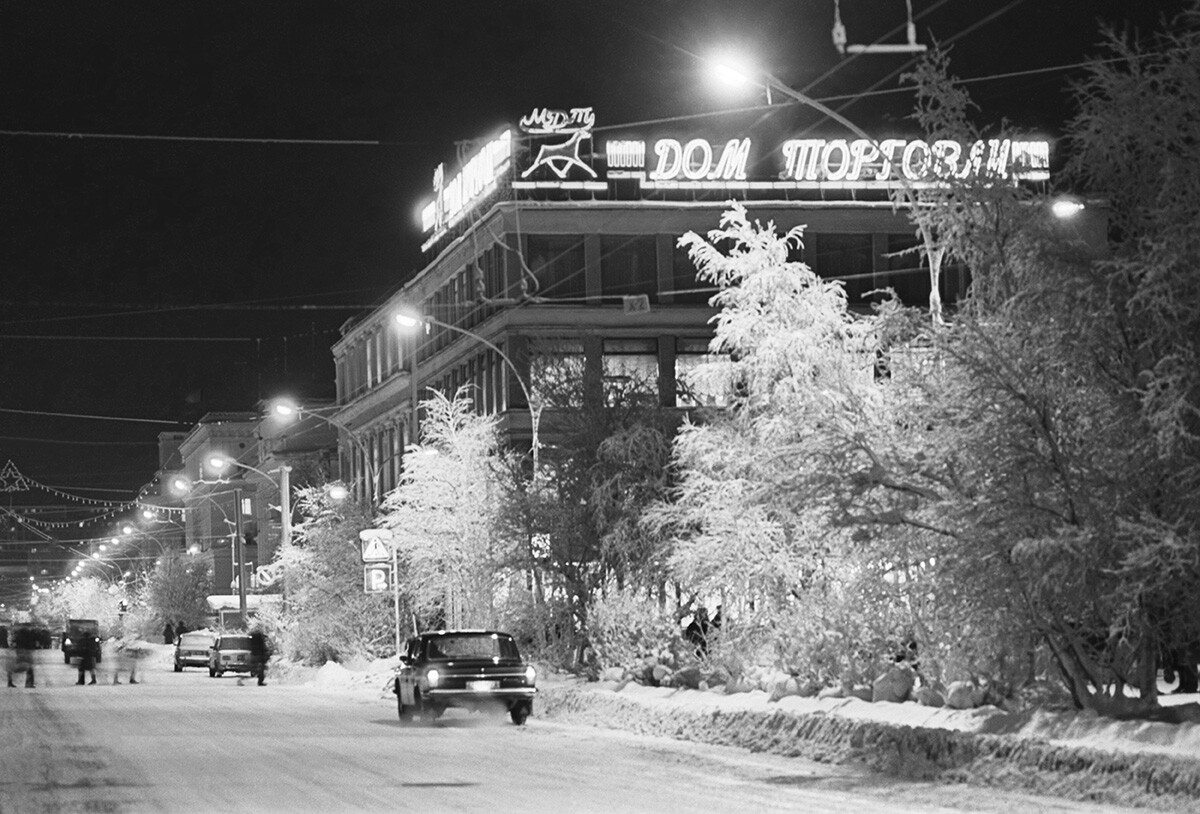
Below is the ‘Women’s footwear’ department store in Stalingrad (now Volgograd), pictured in 1961.
Today, we would call that ‘retro-style’, but, of course, back then, it was the latest trend – like the ‘Ogonyok’ cafe on Lenin Street in Penza in 1967.
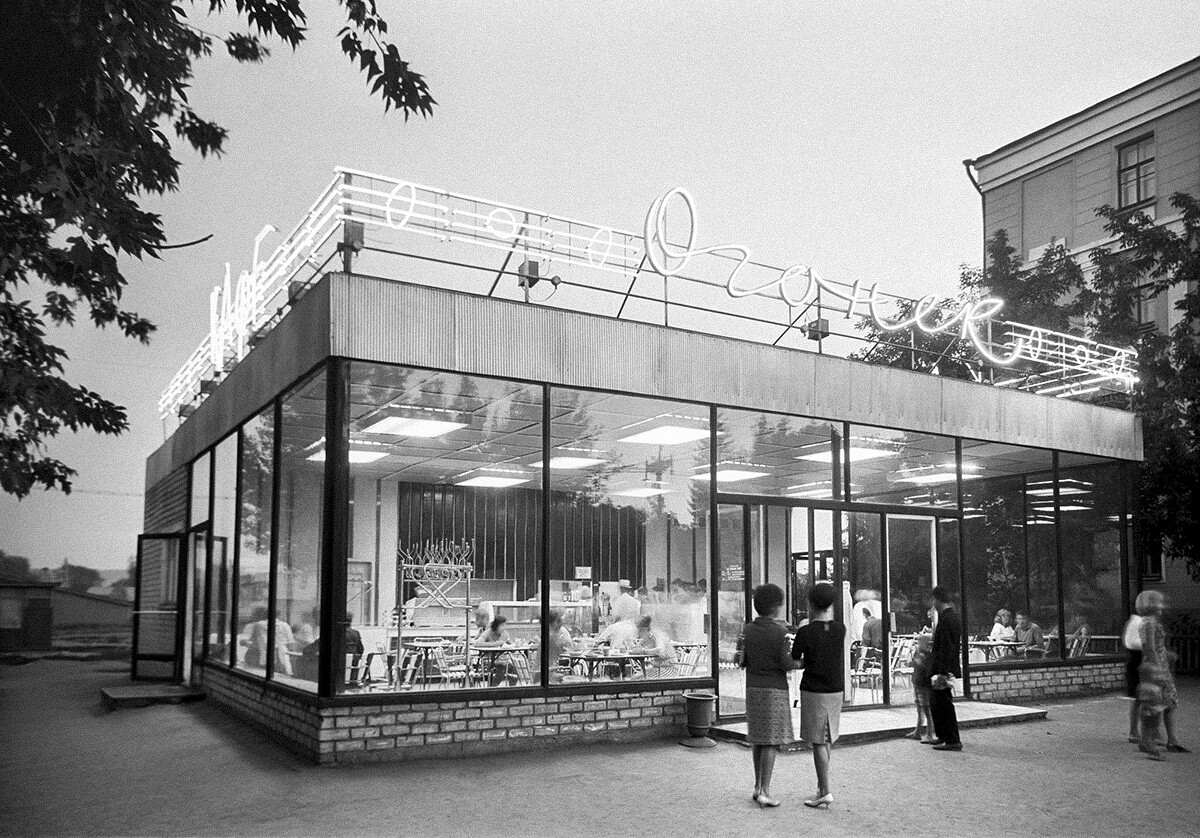
Winter-time Perm was lit up by the glowing building of the Central Universal Department Store, pictured below in 1972.
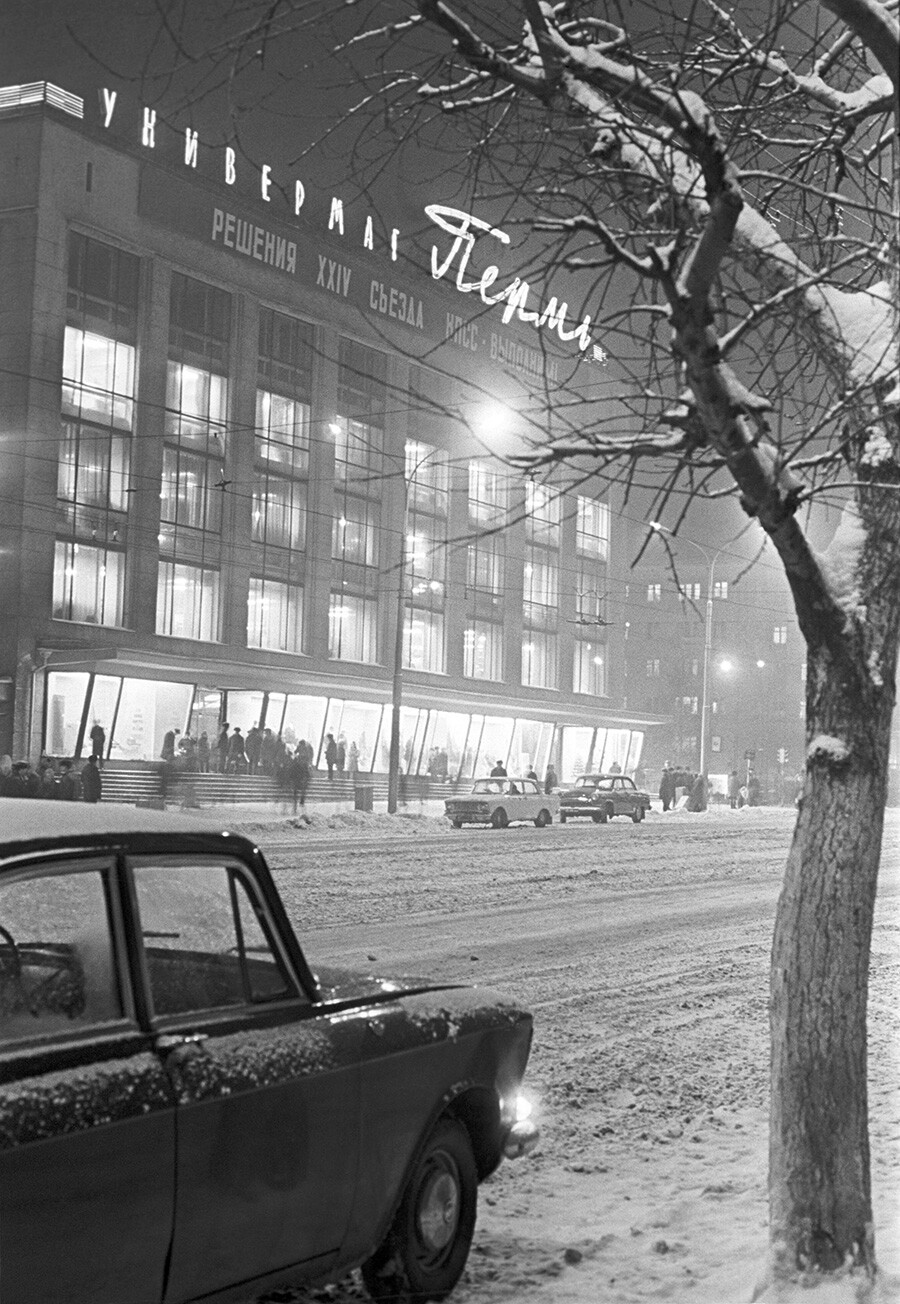
The signs of a deli, a theater, a clothing store and others glow on Lenin Street (currently Svetlanskaya Street) in Vladivostok in 1970.
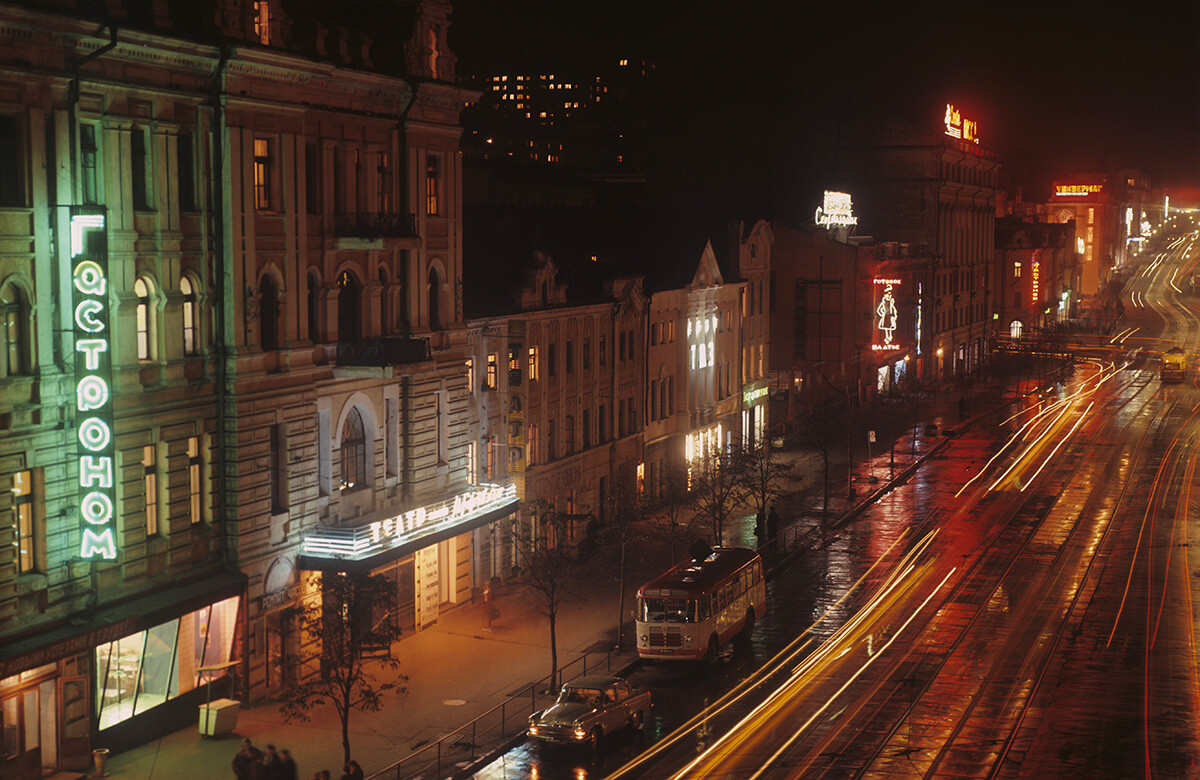
The entrance to the railway station and seaport in Vladivostok was also lit by neon by 1973.
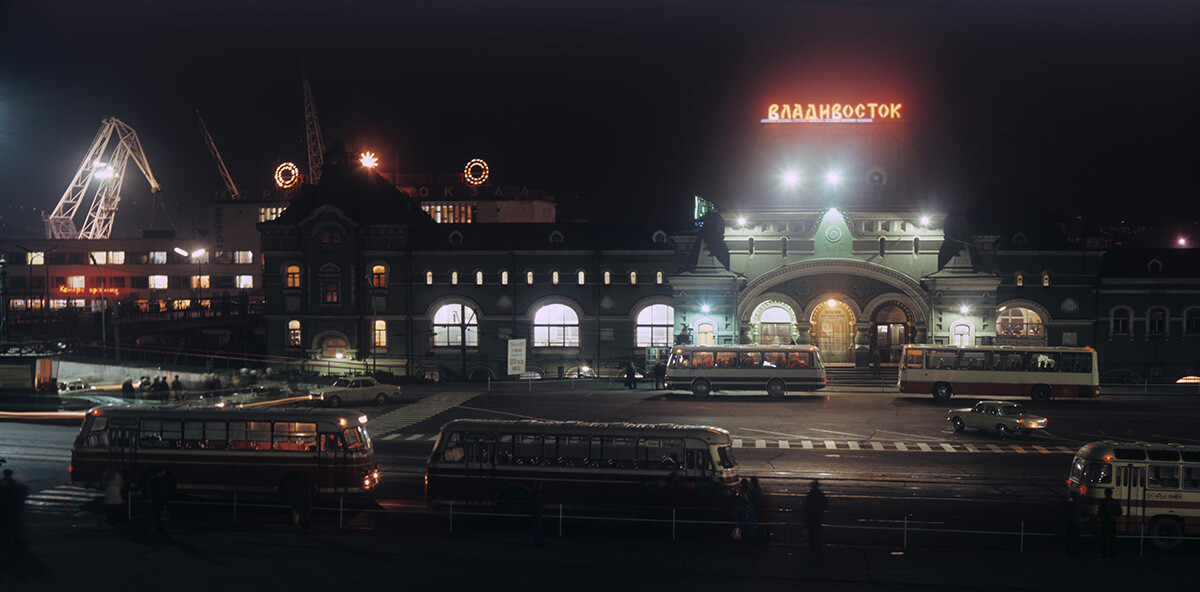
In 1971, in the resort city of Sochi, the ‘Leningrad’ hotel was beautifully lit – it has since been renamed.
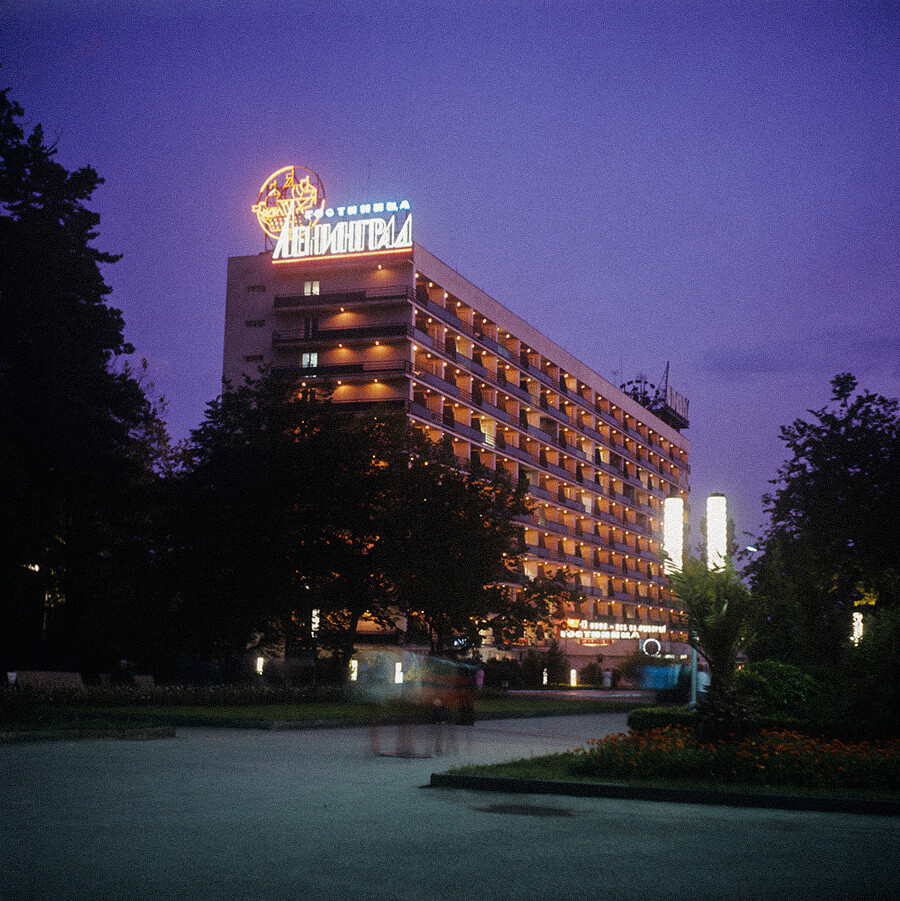
And below is the iconic ‘Uralskie pelmeni’ (literally ‘Ural dumplings’) restaurant, café and cocktail bar in Chelyabinsk, lit up in 1980.
Neon light brightened up the cities in other republics of the Soviet Union: below, for example, is the ‘Vatan’ cinema in Ashgabat (the Turkmen Soviet Socialist Republic).
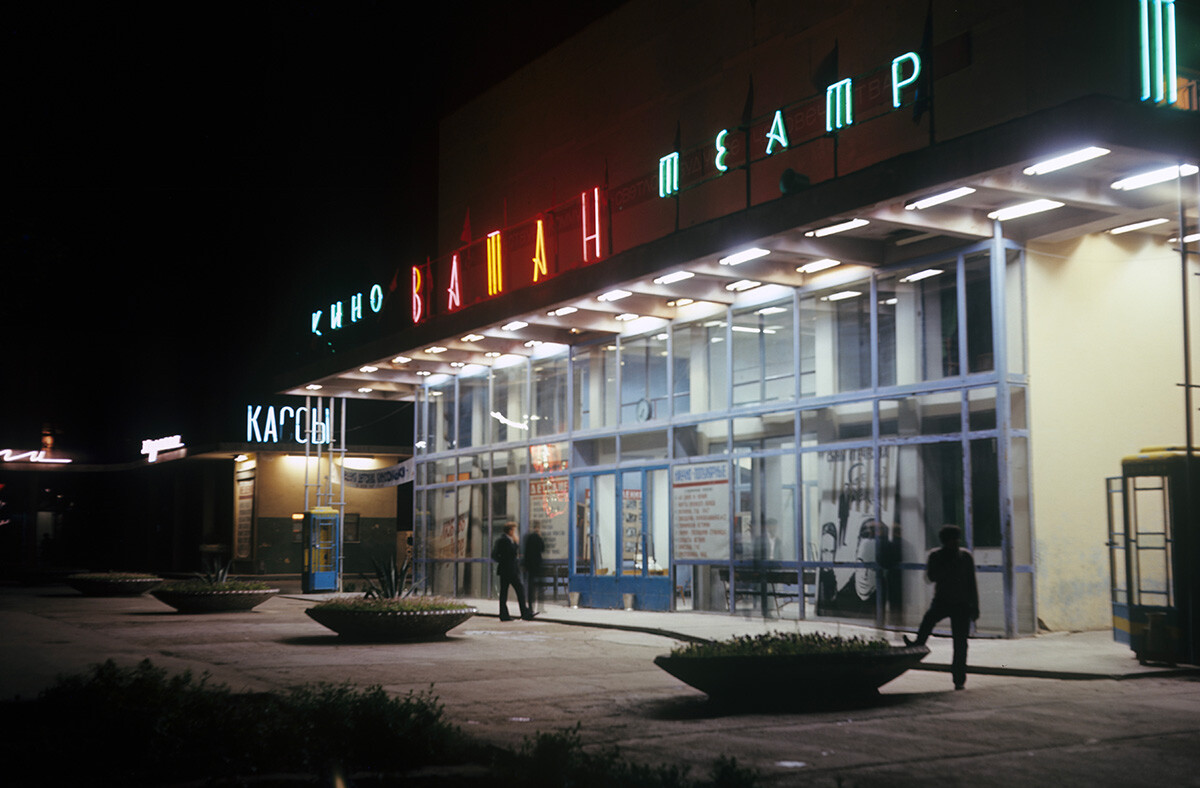
In Minsk, neon signs warned of a pedestrian crossing.
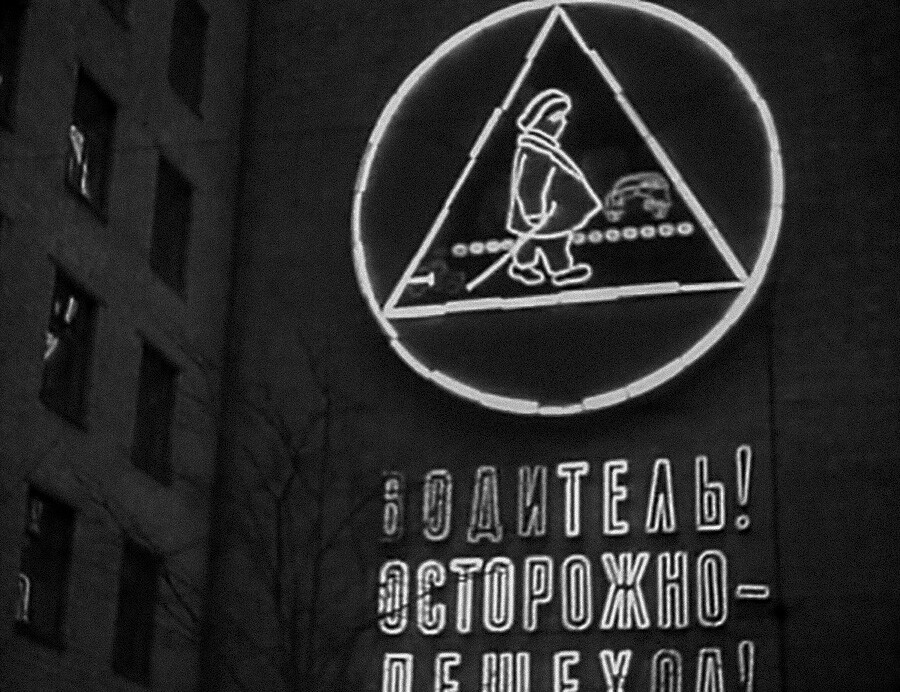
And this is how the very center of the city of Leninakan (modern Gyumri) in Armenia was lit up.
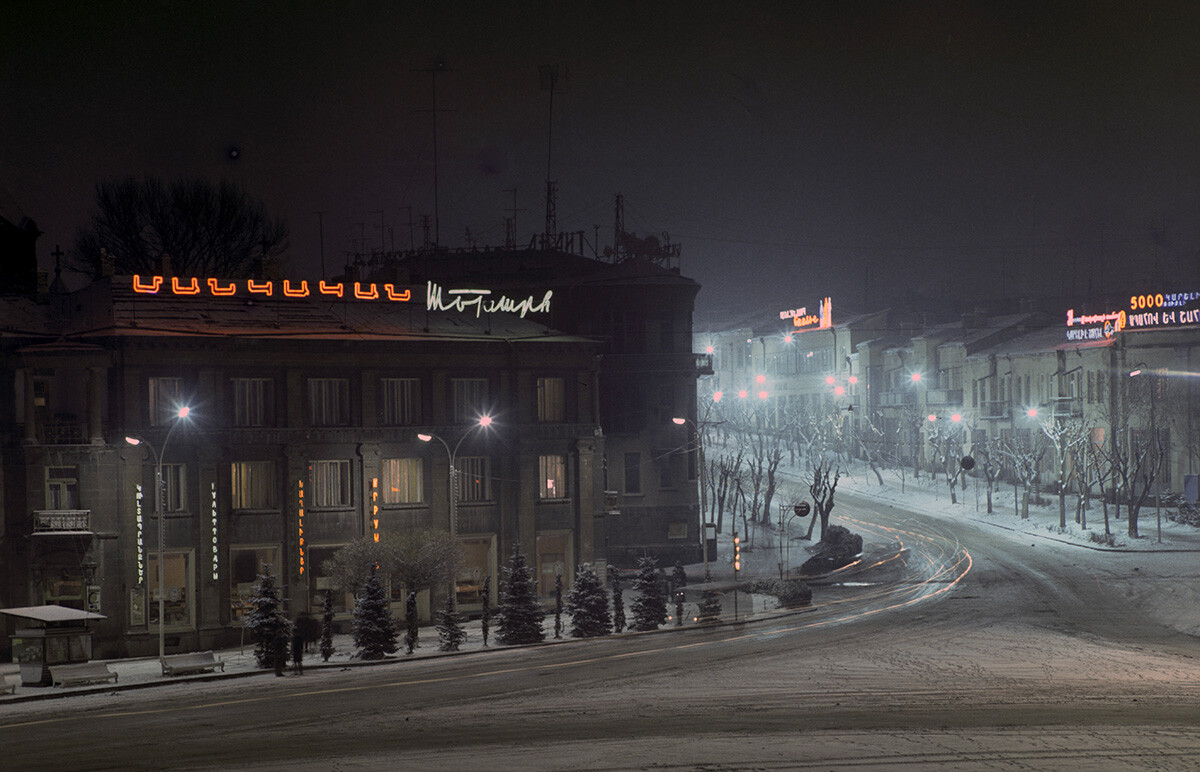
Or, for example, an administrative building in Almaty, the Kazakh Soviet Socialist Republic.
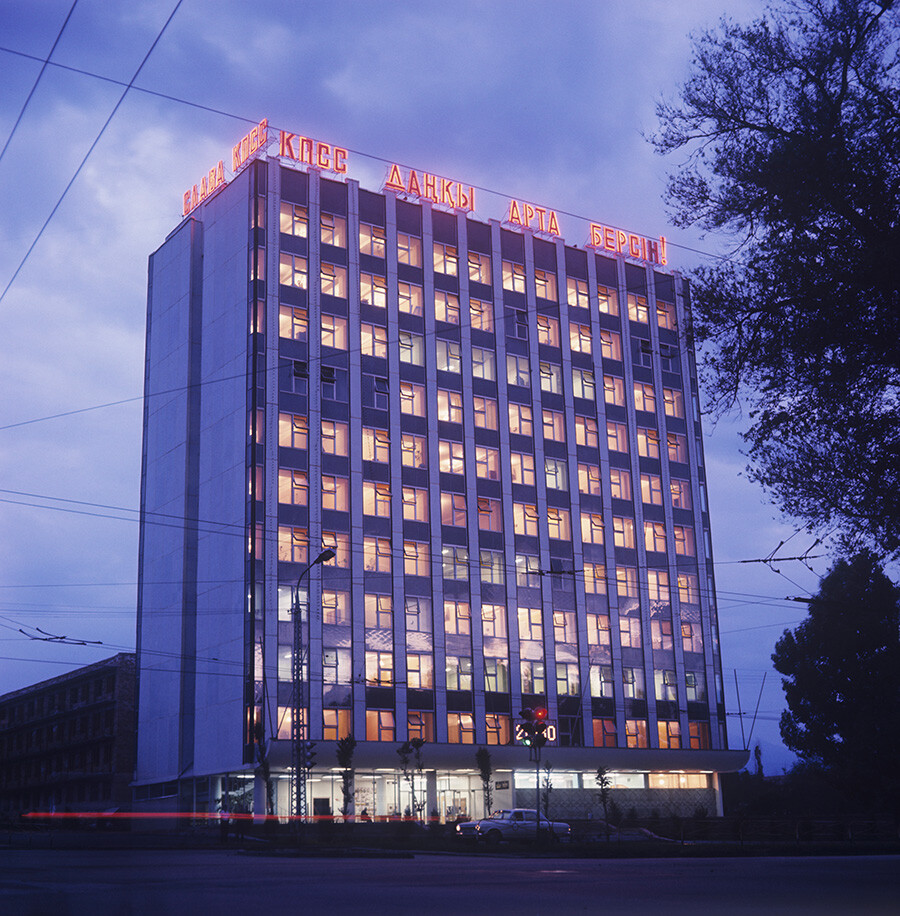
Dear readers,
Our website and social media accounts are under threat of being restricted or banned, due to the current circumstances. So, to keep up with our latest content, simply do the following:
If using any of Russia Beyond's content, partly or in full, always provide an active hyperlink to the original material.
Subscribe
to our newsletter!
Get the week's best stories straight to your inbox